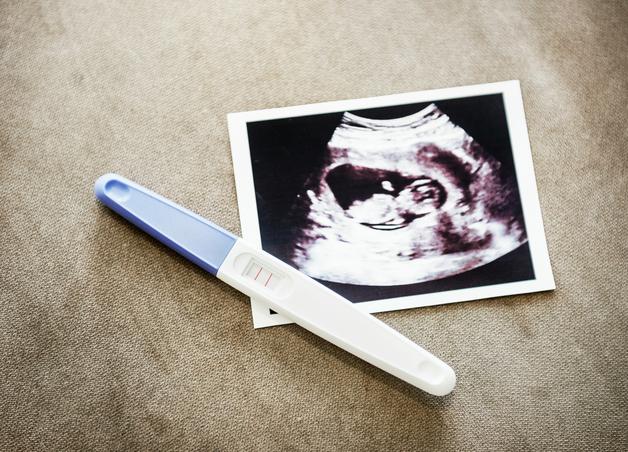For many parents, the anticipation of labor pain sparks an emotional whirlwind—curiosity mingling with apprehension, memories from relatives intensifying the drama, and whispers of cultural legends swirling around. Still, some questions march relentlessly through the mind: Will this pain be relentless? Is there any way to tame it? And why, for some, does the body seem designed to endure, and even rise above, this most intense sensation?
Labor pain is not an accident—nor is it just a test of strength. It’s a conversation between your body and your mind, marking every milestone as the uterus contracts, the cervix softens, and the birth canal yields for your baby’s entry into the world. It brings signals, first tentative, then unmistakable. This sensation flows, peaks, recedes—carrying meaning beyond discomfort. Understanding the meaning behind every cramp, jolt, and surge can rewrite that narrative of dread into one of preparedness and empowerment. Ready to unravel not just what happens, but how to meet it with strategies, medical knowledge, and perhaps a surprising sense of calm?
Exploring the Roots: How Labor Pain Begins and Evolves
What really triggers labor pain? The journey usually starts quietly, in the latent phase—gentle, spreading tension in the lower belly, a feeling akin to growing menstrual cramps or warmth, radiating sporadically. As the pace quickens into active labor, prostaglandins and oxytocin—those master hormones—initiate powerful uterine contractions. These waves can grip the abdomen, radiate toward the back, or shoot down the thighs.
As your baby moves further down, the perineum—tissue between the vagina and anus—must stretch, sometimes tugging, sometimes burning, occasionally causing an intense pressure that mothers rarely forget. All of this is punctuated by the rising and falling tides of contractions, with some describing a grinding discomfort and others a sharper, rhythmic pain that surges with every uterine contraction.
Physiologically, the pain is not just punishment—it’s loaded with function. Each contraction signals progress, secretes endorphins (the body’s own painkillers), and lets oxytocin orchestrate contractions and bond parent to infant. Adrenaline, however, can counterattack—if stress or fear surges, it can amplify labor pain and disrupt the harmony of labor hormones. Every parent’s journey is colored by their own sensitivity, medical backdrop, cultural traditions, and even baby’s position (posterior babies can hammer the lower back more than others).
How Labor Pain Actually Feels: Stages and Sensations
Does labor pain have a single face? Absolutely not. It shifts continuously:
- Early labor (latent phase): Gentle, dull cramps, perhaps a nagging pressure in the back or abdomen—maybe it feels like your usual period, only just a bit “different”.
- Active phase: Those waves grow stronger, more frequent, almost sculpted by a force of their own—abdominal and back pain may echo down the legs, sometimes demanding movement or vocalisation.
- Transition: The drama peaks, contractions shadow each other with little rest, sweat beads on the brow, trembling sets in. For some, this is when the pain hits hardest—a crescendo of intensity.
- Second stage (pushing): Now the sensation pivots—stretching, pressure, an unmistakable burning (“ring of fire”) as the baby’s head crowns.
How to distinguish true labor pain from the false alarms that often visit late pregnancy? True contractions are regular, intensify steadily, radiate from back to front, and stubbornly resist rest or changing position. Braxton Hicks—those false contractions—are erratic, usually mild, and never change the cervix. If shooting pains strike for just a moment, likely round ligament pain, not labor’s relentless pattern. Recognising these distinctions is the first step toward timely and effective care.
What Shapes Labor Pain? The Many Influences
No two experiences with labor pain are alike, not even for the same mother. What makes it so variable?
- Baby’s position and size: A posterior baby (spine to mother’s back) may cause back labor, amplifying the ache in the spine. Bigger babies stretch tissues even further.
- Labor duration: Extremely swift labors can overwhelm the senses, leaving no adjustment time. Slow, drawn-out labors drain energy, eroding tolerance.
- Medical interventions: Forceps, vacuum extraction, episiotomy—each changes not only the pain during birth, but sometimes the recovery days too.
- Emotional and mental state: Anxiety or fear sends adrenaline on a rampage, magnifying pain. A calm, supportive environment boosts endorphins and raises pain thresholds.
- Cultural environment, family narratives, and personal beliefs: Did elders recount labor as an ordeal or a transformative rite? Context influences expectations, shaping both coping and memory.
Each journey deserves respect. A listening ear, creative adaptation, and the right environment allow parents to own their experiences, regardless of the path taken.
Expressing, Measuring, and Understanding Labor Pain
Describing labor pain isn’t always easy—finding the right words at the right moment can prove elusive. To ensure the best support, tools like these come into play:
- Visual Analogue Scale (VAS): Draw a line between “no pain” and “worst pain imaginable”. Where does your current sensation fall?
- Numerical Rating Scale (NRS): Give your pain a score—anywhere between 0 and 10.
- Verbal descriptor: Is it mild, moderate, or severe?
Why does this matter? Accurate labeling allows for quick reassessment and adjustment. Open, respectful dialogues help construct a care plan that evolves as labor unfolds. Frequent honest updates mean no discomfort goes unnoticed.
Natural Methods for Labor Pain Relief: Trusting the Body’s Wisdom
Across the world, millions lean on natural strategies for labor pain management, trusting the intelligence of their own bodies. Why? These approaches often bring calm, enhance control, and let biology do its work.
- Breathing techniques: Deep, measured breaths reduce muscular tension, slow the heartbeat, and blunt the sharpness of contractions. The simplicity deceives—this can sometimes melt away anxiety.
- Movement and posture changes: Squatting, swaying, kneeling, or birthing ball exercises can redistribute pressure in the pelvis, sometimes transforming pain entirely.
- Hydrotherapy: A soak in warm water, a directed stream from the shower, or a warm compress softens muscles and soothes frayed nerves.
- Massage and acupressure: Hands, a tennis ball, even a well-placed elbow pressing the sacrum—all distract from pain and release tension.
- Personalized environment: Dimmed lights, calming music, comfort objects, fragrant oils (if advised)—the right atmosphere floods the body with oxytocin and endorphins, gentle allies during birth.
- Yoga, meditation, and visualization: Prenatal yoga builds strength, guided imagery reframes pain, and hypnobirthing can transform even the hardest contractions into manageable waves.
These options are not fixed rules. Every parent, every couple, sculpts their own comfort zone. What brings relief for one might seem pointless to another—and that’s absolutely fine.
Medication-Based Pain Relief: From Epidural to Opioids
Sometimes, natural methods alone do not suffice, and labor pain demands medical support. The epidural is the gold standard—medication is delivered near the spinal cord, numbing sensation below the waist but letting parents stay awake and aware. Slight leg numbness, a brief drop in blood pressure, or headache later can occur, but many find the relief life-changing.
Other medical options include:
- Intravenous analgesics (opioids): These reduce pain for those who can’t or choose not to have an epidural, but may create drowsiness or nausea.
- Pudendal block and local anesthesia: Numbs the perineum for a targeted window, often during pushing or stitching.
- Nitrous oxide: Often called “laughing gas”, this inhaled medication brings mild, short-lived pain relief and often reduces anxiety.
Every medication should be a conversation between parent and care team—balancing pros, cons, and adapting as each hour unfolds. Regular reevaluations matter, as needs change quickly.
Preparing for Labor Pain: Education, Mental Toolkit, Support
Preparation isn’t just reading or listening—it’s about developing a toolkit before labor pain even begins. How to get ready?
- Childbirth education: Classes in hypnobirthing, prenatal yoga, or labor simulation offer hands-on tools—special breathing, helpful positions, partner role play.
- Drafting a birth plan: Write down hopes for pain relief, environment, interventions, and the people you want around. It’s a starting point for open, honest communication—not a contract, but an outline.
- Building a comfort kit: Soft clothing, favourite music, snacks, even scented sprays—anything that feels nurturing can turn a hospital room or home into a personal sanctuary.
- Mental preparation: Discussing fears, swapping stories, goal-setting—these emotional strategies build resilience for the unexpected.
The result? When labor pain truly begins, you’re one step ahead, armed with knowledge, practical skills, and a support network ready to adapt.
Postpartum Discomfort: Labor Pain’s Aftermath and Recovery Tips
Once the baby is here, the sharp throes of labor pain often fade into the background—yet new aches take stage:
- Perineal pain or swelling: Tears, cuts, or simply stretching can leave lingering soreness. Warm shallow baths, cold compresses, and gentle walks encourage healing.
- Afterpains: The uterus must shrink, and these contractions can feel like menstrual cramps, sometimes intensifying during breastfeeding. Simple painkillers and changes of position bring relief.
- Breast discomfort or general fatigue: Soreness, tiredness, and, for some, wound issues appear. Pelvic floor exercises—now standard—restore strength and confidence.
- Mood shifts and emotional well-being: Fatigue, uncertainty, and fleeting sadness touch many families. Seeking support from a psychologist, midwife, or family is a strong, wise choice—there’s no award for enduring alone.
Nurturing the mind and body together ensures true recovery, paving the way for confident, healthy parenting.
Myths and Misperceptions about Labor Pain
Misinformation about labor pain is everywhere. Let’s clarify:
- Not every birth is defined by intolerable pain. Experiences vary hugely—and all can be valid.
- Cesarean section doesn’t erase pain, it simply changes the timeline (no contractions, but surgical recovery).
- Studies confirm a wide range of pain perception—right preparation, mind-set, and support can transform pain into power.
A sense of agency, rooted in medical fact and not myth, changes how parents remember birth.
Social and Cultural Aspects: The Wider Lens on Labor Pain
The way society frames labor pain is significant. Some view it as an essential rite; others see comfort as the ultimate goal. Whether families prize stoicism or open expression, prefer home birth or hospital, these choices colour perception and experience. Respect for these beliefs, paired with flexible, personalized care, transforms childbirth into a story parents can claim as their own.
Key Takeaways
- Labor pain is universal, but its intensity, duration, and quality shift with each parent and each delivery.
- Hormones (oxytocin, endorphins, adrenaline), physical changes (contractions, dilation), and psychological state all form one interconnected experience.
- A mix of natural methods (from breathing and movement to support-rich environments) and medical pain relief (epidural, nitrous oxide, opioids) enables truly personalized pain management.
- Preparation—education, a written birth plan, emotional readiness, and a physical comfort kit—gives families practical tools and confidence.
- Postpartum discomfort deserves as much kindness and medical support as labor itself—physical recovery and psychological well-being go hand in hand.
- Each labor pain journey brings opportunities for strength, self-knowledge, and bonding with your child—transformative moments that shape a lifetime.
- For more answers, reassurance, and custom advice, parents can always lean on a healthcare provider—and explore resources like the Heloa application for confidential health questionnaires and expert tips.
Questions Parents Ask
Can labor pain start and stop?
Occasionally, labor pain may seem to begin and then fade, a pattern commonly referred to as “false labor” or early latent phase. Such contractions may be regular and even uncomfortable, but might ease with rest, hydration, or movement. This start-and-stop pattern is quite common and simply means the body is making early preparations for the main event. If ever in doubt, reaching out to a healthcare provider is wise—they can provide reassurance and guidance.
How can partners help during labor pain?
Support from a partner can be deeply meaningful during labor pain, both practically and emotionally. Simple acts—gentle back massage, encouraging words, offering drinks, or suggesting a position change—can lighten the load of contractions. Close presence and attentive listening create a protective emotional space, helping mothers to find calm even amidst intense pain.
Is it normal to feel scared about labor pain?
Most parents experience some nervousness, worry, or even fear about labor pain—this is natural, especially with so many stories and unknowns swirling about. The best approach is open discussion: share these feelings with your care team, attend childbirth classes, and seek out parents who have recently given birth. Transformation begins with recognition; readiness, support, and reliable information can help turn worry into quiet strength.
Further reading:









